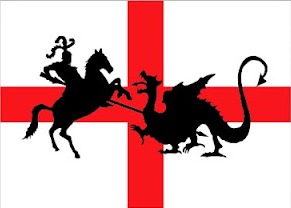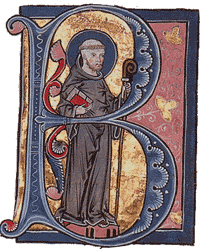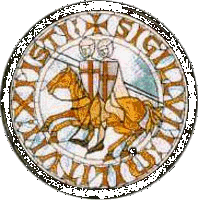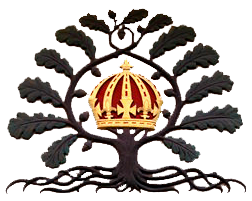A Charismatic Christian Presses On to Catholic Maturity
 Embryo Parson Posted on
Embryo Parson Posted on  Saturday, December 26, 2015 at 05:23PM
Saturday, December 26, 2015 at 05:23PM Charity never faileth: but whether there be prophecies, they shall fail; whether there be tongues, they shall cease; whether there be knowledge, it shall vanish away. For we know in part, and we prophesy in part. But when that which is perfect is come, then that which is in part shall be done away. When I was a child, I spake as a child, I understood as a child, I thought as a child: but when I became a man, I put away childish things. - St. Paul
A former Managing Editor of First Things recounts her journey from charismaticism to Roman Catholicism. Excerpts:
And there were miracles. One afternoon, when I was about four, I came into the kitchen to find mom sitting immobile at the table, in the grip of what she would later describe as “a black cloud, a satanic fog.” I began to speak in tongues, and the cloud disappeared, as did the anorexia from which she had suffered for years. At a healing service around the same time, our minister laid his hands on my left leg, which curved in at the ankle and required me to wear a special heavy shoe, and as he prayed I watched my leg straighten out before my eyes. Being a dancer would never have been possible without that healing. Most of all, we prayed as a family, whenever there was something that needed praying about. We prayed in the words of St. Paul: we were washed in the blood of the Lamb, putting on the armor of Christ, treading on serpents and scorpions, believing that we might receive. We laid hands on each other and agreed that by his stripes we were healed. Jesus was as much a part of our family as any of us; in fact, he was its center, since everything that happened to us came from him.
Before long, though, my parents became concerned about what they were seeing in the charismatic movement. The churches in which we worshiped kept breaking into factions over everything from doctrine to finances. Members could not agree on what to preach, how to pray, how to interpret Scripture rightly, and finally there would be a split, usually a bitter one. But that wasn’t the worst of it. The “faith message” said that you could have anything you wanted—even a new car or a bigger salary”—if only you believed enough. When our friend Greg got pneumonia, he was urged not to see a doctor but rather simply to declare himself healed. If he had enough faith, the church said, his health would be restored; going to a doctor would demonstrate, in fact, a lack of faith. Greg died soon thereafter, a martyr to what my parents began to see as an increasingly suspect and even blasphemous gospel. . . .
My advanced placement English class had me reading stories and novels by that brilliant Catholic apostate, James Joyce. They were full of words I’d never heard before: chasuble, monsignor, transubstantiation. For help in understanding Joyce’s points of reference I went to my friend Emily, a devout Catholic and, as it happened, a member of Fr. Norbert’s parish. An after-school talk about definitions turned swiftly into a probing conversation about the Church, in which Emily described what happened during Mass. She was calm and thorough, but when she arrived at the Canon, her voice grew intense. Her eyes shone when she said: “The whole Mass culminates in what happens here, in the Eucharist, when Christ becomes present.” As she explained what Catholics believed about the Eucharist, something stirred in me, as well. “Christ becomes present.” I didn’t know quite what that meant, or how it happened, but I knew it was him I wanted to see. Emily invited me to join her at Mass, purportedly to get a firsthand look at all those chasubles and things. The next Sunday I found myself kneeling next to her near the altar at St. Anne’s.
I’d long had an amateur’s interest in things Catholic. Having discovered Gregorian chants and books of icons at the library, I had wondered at the purity and variety of the liturgies and the richness of the art. Studying the aesthetics of the Church, however, had not prepared me for this experience of the Church in the flesh.
My mind was in chaos in the midst of this strange ceremony. As I knelt before the stone table, covered with an intricate lace cloth, and gazed at the mother-of-pearl icon of Our Lady of Czestochowa and the huge gold tabernacle—while Fr. Norbert sang the antiphons and censed the sanctuary—I felt as though I was moving about in a dark room where strange figures brushed up against my shoulders, and strange voices guided me along. I was lost, but not afraid, and when the bell rang after the words of consecration—when I looked up to see Fr. Norbert holding the white Host above his head—I wasn’t even lost. It was Jesus. And I was home.
After Mass, Emily introduced me to Fr. Norbert. He grasped my hand and looked into my eyes, and I felt the Holy Spirit’s power coming into my heart. It was the same steady, physically palpable force I had felt when that preacher laid his hands on my leg so many years before. Before long, I told him that I would like to enter the Catholic Church. “Well, come and see,” he said with a gentle smile, and he told me to be at the religious education building on a Tuesday night a few weeks later, when RCIA classes would begin. . . .
It’s not too much to say that my charismatic upbringing trained my eyes to see all this. In the rituals of the Catholic Church, in the saints, in the papacy, and in the sacraments, I was able to recognize a drawing near to the person of Christ—in large part because another tradition taught me to recognize him in the first place. I continue to invoke the Holy Spirit; I rely on the Word. In the confessional, there is a powerful sense of Jesus’ healing mercy and my own radical dependence on it. All of this, all learned from the faith of my parents, converges with and deepens my experience of the Church. I have traveled very far, and there is far to go. Through it all, I know Christ will keep leading me home.
I wonder if there is a lesson here from St. Paul and the author of this article about moving on to spiritual maturity from the childish nature of the sign gifts to the maturity of Catholic faith. Of course, the writer of the article sees the Catholic faith in terms of communion with the Church of Rome and acceptance of her doctrines. Both Anglican and Orthodox Christians obviously dispute that understanding, but her point in finding the telos of the sign gifts in the rituals and sacraments of the Church is one that Anglican charismatics should seriously consider. The legacy of traditional Anglican spirituality is exceedingly rich; there's nothing "stuffy" about it. Why do we need any "new thing"?





Reader Comments